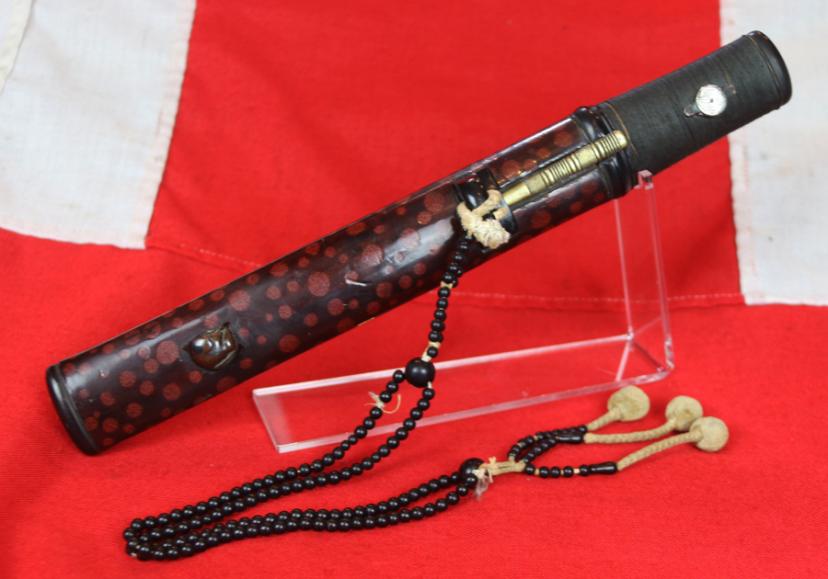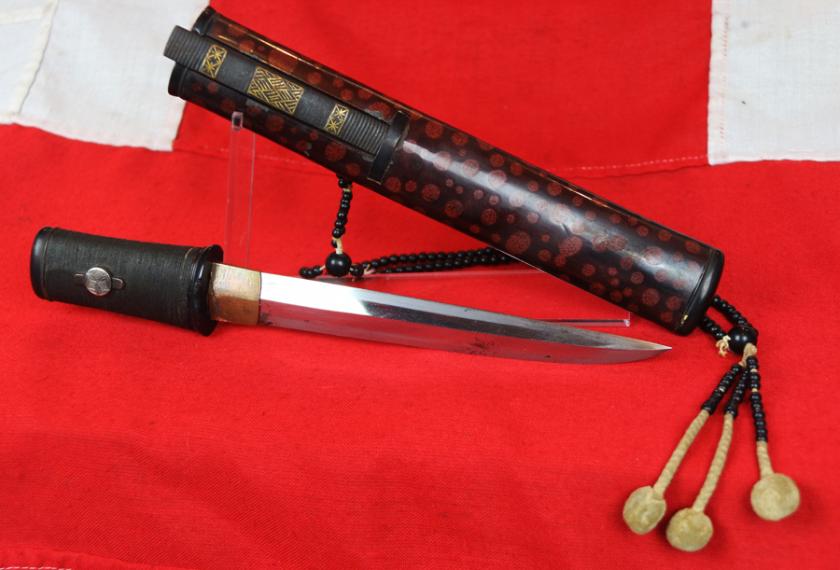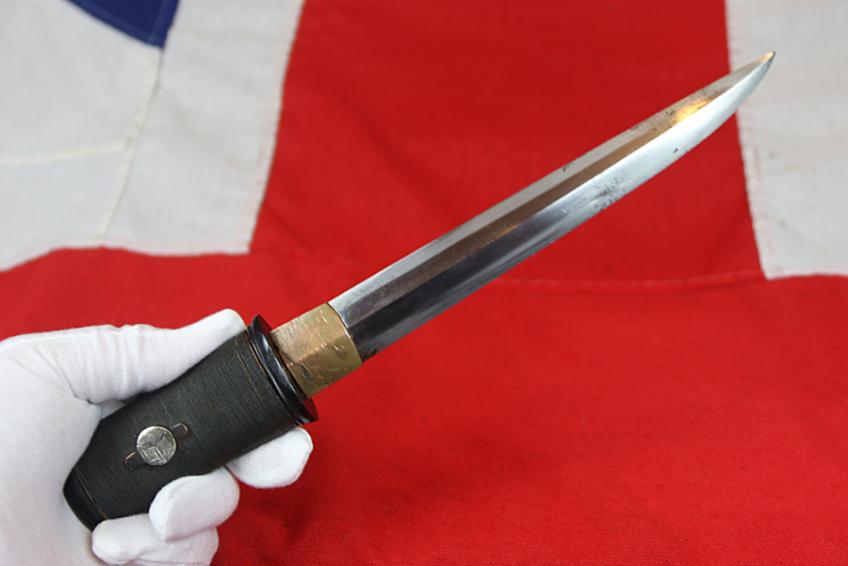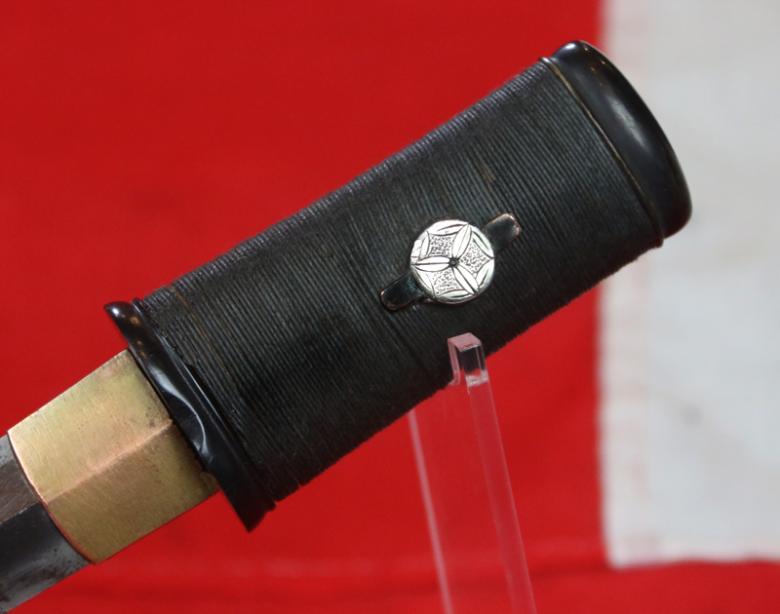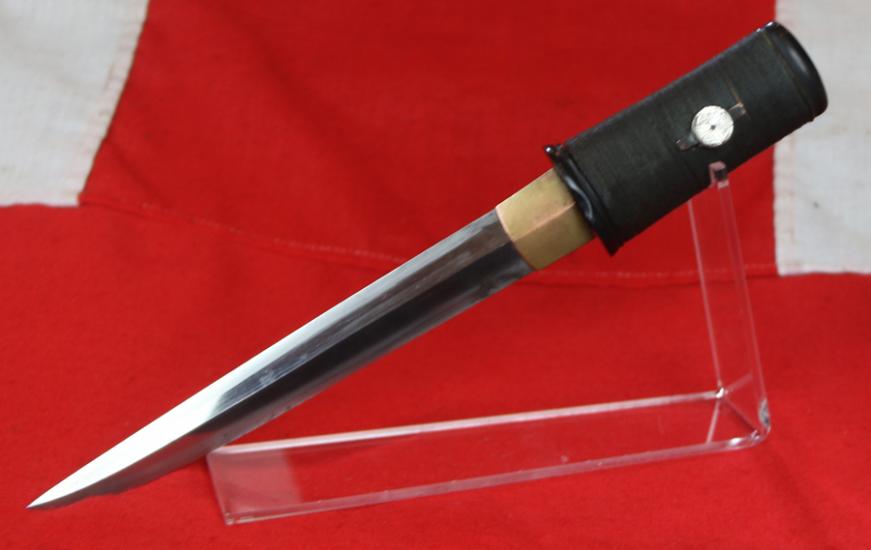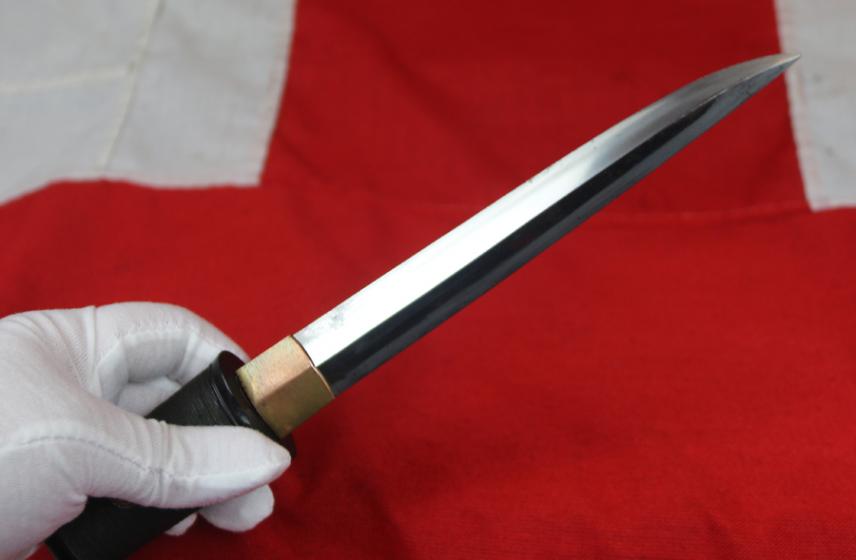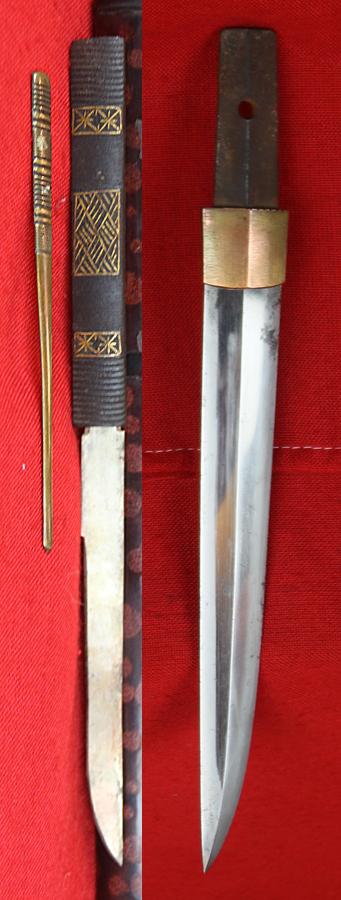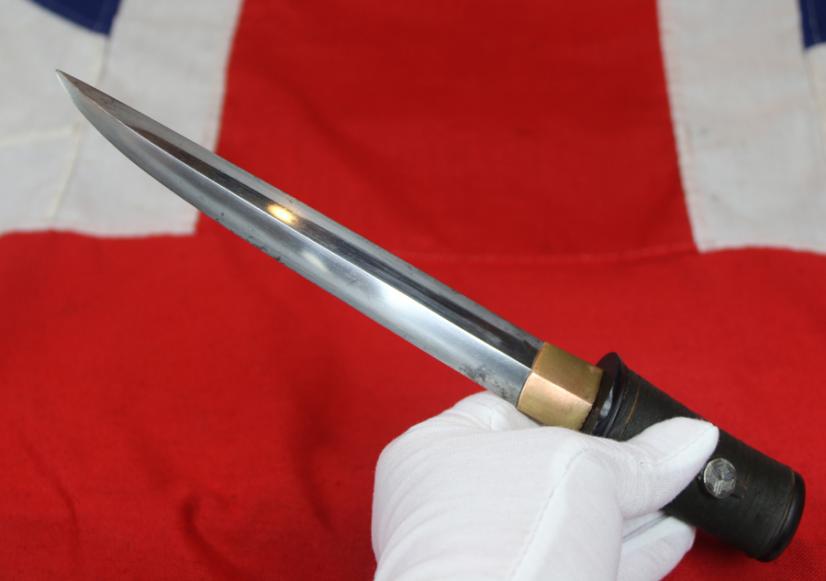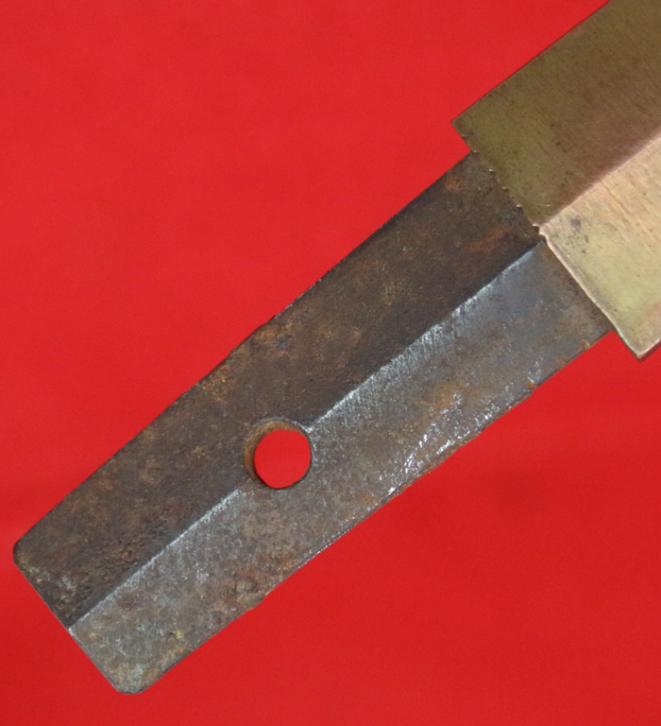A Wonderful and Rare Museum Grade 500 Year Old Koto Era Muramachi Period Moro Ha Zukuri Bladed Samurai Aikuchi Tanto, With Assymetric Ridge Line
Moro-ha zukuri blades are immensely desirable and particularly from this period, very rare indeed. Either double edged or a single edge with an opposing false edge.
Eminently suitable for any museum grade collection. Original Edo polish. Original edo koshirae, and saya, clan mon menuki in silver over a narrow cord binding. Kodzuka with iron handle and gold inlaid geometric patterns, kogai with ridge lines. A fine saya mount of a shakudo rabbit. Tied with a very nice juzu of Edo Buddhist prayer beads.Prayer beads were introduced into Japan with Buddhism and were used by Buddhists of the noble class. Their usage became widespread from the Kamakura era( in 1192 to 1333) Moroha zukuri is a rare form of tanto blade that is asymmetric for the ridge line. Fine examples were from the The Sue Bizen 末備前 school; the Sue-Seki 末関 school; The Sue Mihara 末三原 With the reconciliation of the Northern and Southern courts during the rule of the Ashikaga Shoguns, the Muromachi period began. This ushered in a golden age of culture and art. While the court was unified, the country was torn by constant civil war particularly after the death of the third Ashikaga Shogun, Yoshimitsu.
Prior to the Muromachi Period the word katana generally referred to tanto. Long blades were called tachi or uchikatana. We find tanto surviving from this time that emulate the middle Kamakura style, i.e. blades with uchizori and others with the Nanbokucho sun-nobi length. After the middle of the Muromachi period, there appeared many rather broad, saki-zori blades of less than 36 cm. Overall 12.75 inches long, blade 7.75 inches long. Small finger marks and very light scratches on the blade surface, perfectly acceptable for such an ancient blade. It is important to bear in mind, that due to the revered status that Japanese swords achieve for most of their working lives in Japan, that the condition they survive in can be simply remarkable. One can see just how remarkable it can be, by comparing the condition of this fine sword that was made around the same time as the early Tudor period of King Henry the VIIIth to any equivalent aged, surviving, early Tudor period sword, from any country outside of Japan, and that comparison will show just how fine any Japanese sword’s state of preservation, from the same era, truly can be.
Code: 23647


